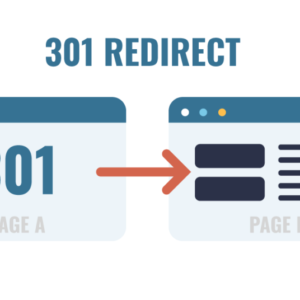Introduction
In the ever-evolving world of search engine optimization (SEO), building high-quality backlinks remains a cornerstone of improving a website’s visibility and authority. One effective, yet often underutilized, strategy is leveraging resource pages to acquire valuable backlinks. Resource pages are curated lists or directories on websites that compile helpful links, tools, or content for a specific audience or niche. These pages are designed to provide value to visitors, making them ideal targets for link-building campaigns. This article explores the concept of building links through resource pages, offering a detailed guide on how to identify, approach, and secure these links to boost your SEO efforts.
Understanding Resource Pages
Resource pages are typically found on websites such as blogs, educational institutions, non-profits, government sites, or industry-specific organizations. These pages aim to aggregate high-quality, relevant content to assist their audience, whether it’s students, professionals, or hobbyists. For example, a university might maintain a resource page for students with links to academic tools, while a marketing blog might list top SEO tools or guides.
The value of resource pages for link building lies in their authority and relevance. Links from these pages are often seen as trustworthy by search engines like Google, as they are editorially curated and contextually relevant. Unlike spammy directories or low-quality sites, resource pages are typically maintained by reputable organizations, making them a goldmine for SEO professionals seeking to enhance their backlink profile.
Why Resource Pages Are Effective for Link Building
-
High Authority: Resource pages are often hosted on high-domain-authority (DA) websites, such as .edu, .gov, or well-established industry blogs. A backlink from such a site can significantly boost your site’s credibility in the eyes of search engines.
-
Relevance: Since resource pages are niche-specific, links from these pages are highly relevant to your content, which is a key factor in Google’s ranking algorithm.
-
Longevity: Links on resource pages tend to remain active for a long time, providing sustained SEO benefits compared to temporary or promotional links.
-
Trustworthiness: These pages are curated with the intent to provide value, so links from them are seen as editorial endorsements, carrying more weight than links from low-quality sources.
Step-by-Step Guide to Building Links Through Resource Pages
Step 1: Identifying Relevant Resource Pages
The first step is to find resource pages that align with your website’s niche or industry. Here’s how you can locate them:
-
Use Search Operators: Google’s advanced search operators can help you find resource pages. Try queries like:
-
inurl:resources [your niche]
-
inurl:links [your niche]
-
intitle:resources [your niche]
-
“useful links” [your niche]For example, if you run a fitness blog, search for inurl:resources fitness to find fitness-related resource pages.
-
-
Explore Industry-Specific Sites: Check websites of universities, government agencies, trade associations, or authoritative blogs in your niche. These often host resource pages.
-
Competitor Analysis: Analyze your competitors’ backlinks using tools like Ahrefs, Moz, or SEMrush to identify resource pages linking to similar websites. If a resource page links to your competitors, it’s likely a good fit for your site too.
-
Leverage Social Media and Forums: Platforms like X, Reddit, or Quora can reveal resource pages. Search for discussions in your niche where users share helpful links or resource lists.
Step 2: Evaluating Resource Pages
Not all resource pages are worth pursuing. To ensure you’re targeting high-quality opportunities, evaluate each page based on the following criteria:
-
Domain Authority: Use tools like Moz’s Domain Authority checker or Ahrefs’ Domain Rating to assess the site’s authority. Aim for pages with a DA of 30 or higher.
-
Relevance: Ensure the resource page is closely related to your niche. A link from a highly relevant page is more valuable than one from a generic or unrelated site.
-
Traffic Potential: Check the page’s traffic using tools like SimilarWeb or Ahrefs to gauge its visibility and potential to drive referral traffic.
-
Link Quality: Review the existing links on the page. If they point to low-quality or spammy sites, the page may not be worth pursuing.
-
Activity and Maintenance: Ensure the page is actively maintained. Outdated resource pages may not be monitored, reducing your chances of securing a link.
Step 3: Creating Link-Worthy Content
To secure a link from a resource page, your website must offer content that is valuable, unique, and relevant to the page’s audience. Here are some types of content that work well:
-
Comprehensive Guides: In-depth guides or tutorials that cover a topic thoroughly are often linked to by resource pages. For example, a guide titled “The Ultimate Guide to Vegan Meal Planning” could appeal to a nutrition-related resource page.
-
Tools or Resources: If you’ve developed a free tool, calculator, or template, it’s a prime candidate for inclusion on resource pages.
-
Original Research or Data: Studies, surveys, or infographics with unique data are highly linkable, as they provide value that’s hard to find elsewhere.
Ensure your content is well-designed, easy to navigate, and free of errors to make a strong impression on resource page editors.
Step 4: Crafting an Outreach Strategy
Once you’ve identified target resource pages and created link-worthy content, it’s time to reach out to the website owners or editors. Follow these tips for effective outreach:
-
Find the Right Contact: Look for the site’s contact page, use tools like Hunter.io to find email addresses, or check social media profiles for direct contact information.
-
Personalize Your Email: Avoid generic templates. Address the recipient by name, reference their resource page, and explain why your content is a good fit.
-
Be Concise and Professional: Keep your email short, polite, and focused on the value your content provides to their audience.
-
Follow Up: If you don’t hear back within a week, send a polite follow-up email. Persistence can pay off, but avoid being pushy.
Step 5: Building Relationships
Link building through resource pages isn’t just about securing a single link; it’s about fostering long-term relationships with website owners. Engage with their content by sharing it on social media, commenting on their blog, or referencing their work in your own content. Building rapport increases the likelihood of future collaborations or additional link opportunities.
Step 6: Monitoring and Maintaining Links
After securing a link, monitor it using tools like Ahrefs or Google Search Console to ensure it remains active and drives traffic. If a resource page is updated or removed, reach out to the site owner to inquire about reinstating the link or exploring other opportunities.
Best Practices for Success
-
Focus on Quality Over Quantity: A single link from a high-authority, relevant resource page is worth more than dozens of low-quality links.
-
Avoid Spammy Tactics: Never use automated outreach tools or purchase links, as these can harm your SEO and reputation.
-
Track Your Progress: Use a spreadsheet to track the resource pages you’ve targeted, outreach emails sent, and links secured. This helps you stay organized and measure your campaign’s success.
-
Diversify Your Approach: Combine resource page link building with other strategies, such as guest posting or broken link building, for a well-rounded SEO campaign.
Common Challenges and How to Overcome Them
-
Low Response Rates: If your outreach emails go unanswered, refine your pitch to be more concise, personalized, and value-focused. Experiment with different subject lines to increase open rates.
-
Rejections: Some site owners may decline your request. Politely ask for feedback or suggest alternative content that might better suit their page.
-
Time-Intensive Process: Link building through resource pages requires patience. Prioritize high-value targets to maximize your return on investment.
Measuring the Impact of Resource Page Links
To gauge the effectiveness of your link-building efforts, track the following metrics:
-
Referral Traffic: Use Google Analytics to monitor traffic driven by resource page links.
-
Keyword Rankings: Check if your target keywords improve in search engine rankings after acquiring links.
-
Domain Authority: Monitor changes in your site’s DA using tools like Moz or Ahrefs.
-
Conversions: If your goal is lead generation or sales, track how resource page traffic contributes to conversions.





